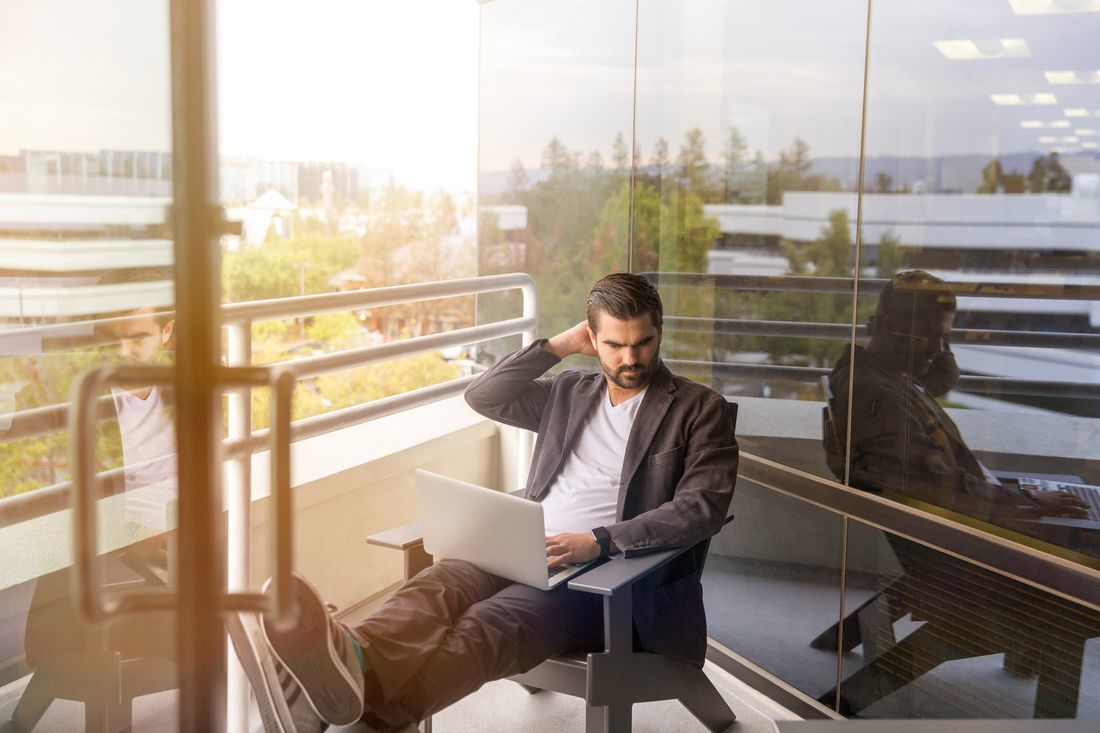Mindfulness is a non-negotiable mindset in terms of practicing workplace safety. Why is this? Mindfulness, being fully present, being awake and aware in the workplace in the present moment is fundamental to both preventing immediate accidents and to ongoing workplace mental health and wellbeing.
This has clear implications for workplace health and safety, the risk of being involved in a physical accident, or risk of becoming infected with Covid19. Mindfulness also has significant impacts on a workers mental wellbeing. As research shows mindlessness, a lack of mindfulness (increased Default Mode Network activity) is associated with higher levels of depression, anxiety and risks of higher stress, burnout and mental health issues.
Mindfulness in a WHS Context
Safe Work Australia’s study on Mindfulness in the Workplace in 2015 defined mindfulness in the WHS context as:
“ Mindfulness is a psychological state in which individuals engage in active information processing while performing their current tasks (Krieger, 2005). Mindfulness is defined as ‘a rich awareness of discriminatory detail and a capacity for action’ and in an organisational context increases as people become more conscious about the ways in which the system can be disrupted, what might go wrong, and who these disruptions are likely to harm.”
Mindlessness, conversely, is habitual, automatic, repetitive behaviour generally brought on by multi-tasking. It can directly impact an individual's overall wellness, stress level, listening skills, injury risk and safety, and potentially death.
Being consistently aware of physical/social distancing, hand hygiene and touching/not touching our face can literally mean the difference between contracting Covid19 and not contracting it. Mindfulness of our physical bodies in space and in relation to others can quite literally determine our disease “risk level” both in the community and at work.
Being mindless, wandering off, being lost in thought, or story, daydreaming or being in default mode network can dramatically increase risk in a WHS context. Consistent communication and workplace signage, reminders are necessary to ensure “remembering” of behaviours that are not habitually ingrained. Especially in a return to work context.
Safe Work Australia has also shown that the top two perceived causes of injury nominated by employers, sole traders and workers were ‘the worker being careless’ and ‘just not thinking’ (Safe Work Australia, 2015).
Employers operating in the health care and social assistance industry tended to have the lowest levels of mindfulness in terms of what they count on in their business, preoccupation with failure and sensitivity to operations compared to the other priority industries. Less than half of these employers indicated that their business spends time identifying how its activities could potentially harm their workers (45%) compared to around 80% among the other priority industries.

Increased levels of negative stress exacerbate mindlessness, worry, anxiety and impair workers ability to remain present
Given that Covid19 is seeing an increase in levels of stress generally across the Australian population and an increase in stress in the workplace, stress is a significant impact for both workplace incident/injury due to mindlessness. And it forms a cumulative impact on employees from both a stress and burnout perspective.
Increased levels of chronic negative stress caused by lockdowns, fears of job loss, reduced work hours, changes to kids schooling and work from home changes can heighten levels of worry, increase cortisol levels, and the release of other stress-based neurochemicals.
The release of such hormones and neurotransmitters in response to chronic stress changes the brains functioning, heightens fear and negative emotions and can cause changes in our perceptions, reactions and responses to the world and the workplace.
Stress based hormones and neurotransmitters can alter the levels of “good’ neurotransmitters that contribute both to feelings of security, safety, satisfaction and connection and can impair our pre-frontal cortex decision making capability, memory and emotional regulation.
In the first instance, each time the body or mind experiences any form of stressor (positive, negative, physical, or emotional), the sympathetic nervous system responds via the fight, flight, freeze sympathetic nervous system. Symptoms include:
- increased breathing rate,
- elevated blood pressure,
- sweating, tense muscles, dizziness
- gastrointestinal dysfunction,
- decreased immune function, and
- heightened sensitivity to light and sound.
Constantly living with these physical conditions without appropriate ways to cope has been directly related to impacting both an individual’s health and risk for injury
Sustained stress activates the amygdala (part of the brain responsible for activating fight flight response and processing fear). This can lead to anxiety, memory impairment, feelings of depression, inability to think clearly, make rational decisions and manage emotions.
Such chronic stress changes the body's response, and the resulting increased expression of Corticotropin Releasing Hormone, CRF . This chronic stress increases the length and volume of expression of CRF in areas of the brain associated with fear and emotion, including the amygdala andis believed to be the cause of health-related stress problems such as anxiety, depression, and infertility.
These increased stress levels create a Mindless state and manifest as:
· A lack of attention to the task at hand
· Being overwhelmed by internal thoughts, feelings, projections, rumination
· Being stuck in story
· Being lost in repetitive thoughts, rumination
· Attempting to multitask
· Increased lack of spatial and proprioceptive awareness (where my body is in space)
· Lack of awareness of external environmental risks or cues
· Risk of emotional overreaction to external stimuli
· Hypervigilance means increase in “startle response” increasing WHS risk
This has extremely clear implications for workplace health and safety physical risks and of course psychosocial risks.

Five ways to Transform Mindless (unsafe) to Mindful (safe) Mindset in a post Covid Workplace
1. Help employees to reduce controllable stressors
Leaders need to communicate with teams and employees daily to provide organisation updates, reduce levels of fear and uncertainty underlying stress responses. Ask for employees inputs, answer their questions and understand their informational and job needs.
2. Cultivate informal interaction
When the workforce is a hybrid of virtual and central, leaders need to rely more on inspirational forms of leadership. Employees working remotely from dispersed locations require new types of leadership behaviours to make up for the loss of incidental, water cooler type chats, not available digitally.
One approach is to leave a part of the meeting agenda free, as a time for employees to discuss any topic. Leaders can also establish an open-door policy and hold virtual “fireside chats,” without any structured content at all, to create a forum for less formal interactions. The objective here is for employees, those working remotely and in-person, to feel like they have access to leaders and to the kind of informal interactions that happen on the way to coffee or lunch.
3. Provide workload/work pace consultation
Review workloads, work pace, and schedules, including work life integration as some teams will be working from home and may have additional carers responsibilities. Other organisational change issues should also be managed and communicated with dispersed teams as organisations move into “first responder” crisis mode often as businesses responding to Covid19.
3. Provide training on mindfulness practice as a safety and team building practice
Researchers have found that mindfulness practice trains mental attention and awareness that builds personal and situational awareness and safety in the workplace. It can also increase compassion and empathy, which are essential traits for supporting both individual and collective resilience.
In addition, mindfulness practice builds feelings of interconnectedness as social distancing and quarantine measures keep us physically separate and yearning for connection. It also potentially reduces workplace stress risk factors for loneliness and isolation.
To build safety and team connection review MLT’s range of flexible online learning/connection options or book an exploratory call.
4. Provide Well-being support, education and strategies for individuals and teams
“The majority of Australians are feeling more stressed
since the escalation of the COVID-19 pandemic with
j just over 1 million people feeling a lot more stressed.”
Source: YouGov Research Impact of Covid 19 on Australians Lives, April 2020, p.24
And whilst the majority of Australians have adapted reasonably well to work from home in the initial few months, there are cracks at the seems all over the country as Victoria goes into its second lockdown and it appears obvious that our future health and economic course continues to be uncertain.
The pandemic will require a new level of self-care, team connection and engagement and communication in a completely different frequency and style to that that existed pre Covid19.
More support to maintain employee’s mental health will be necessary in the areas of:
- Understanding stress, how it affects our minds, bodies, behaviour and decision making
- How to navigate building mental health and workplace well being for teams, leaders and managers
- Managing stress and anxiety through evidence based breathing and mindfulness techniques
- Changing behaviour and managing decisions in a highly volatile crisis driven environment
- Building transformational and inspirational mindsets to match fast changing environments
- Lifestyle and self- care programs for parents and individuals
Get in touch for a conversation on what will be most helpful for your specific team for connection and wellbeing in coming months.
5. Connect Dispersed and Remote Employees
As practical and as much as employees appear to enjoy the benefits of work from home. There is nothing that substitutes for face to face team building and connection. Team leaders can reduce virtual distance by creating an environment where team members feel emotionally and psychologically connected to one another and to the business.
But how do you do this?
“When virtual teams underperform, companies often think that geographic issues are the main problem and gravitate toward strategies to fix that problem,” said Lojeski, founder and CEO of Virtual Distance International (VDI) and co-author of The Power of Virtual Distance (Wiley, 2020). “Our data show that the root cause is virtual distance. It changes the way that people relate to each other.”
According to VDI data, the greater the virtual distance, the higher the negative impact on the team in terms of innovation effectiveness, trust, work satisfaction, role and goal clarity, and project success.
“When you work remotely, you can’t take somebody out to coffee or go to happy hour with your co-workers,”
Reynolds said. Instead, an open channel for communication on a technology platform can give remote team members a “meeting place” where they can go to socialise.
Internal communications tools like Yammer and Slack are popular for water-cooler conversations, for big announcements, to celebrate birthdays, anniversaries and promotions.Text-based media is generally more useful for sharing basic daily information, whilst video chats and telephone conversations are better for brainstorming, problem-solving and relationship-building.
Face to face is 10 times more effective than the phone, and the phone is 10 times more effective than e-mail. Whilst making good use of video is best practice in a virtual world, nothing substitutes for in person communication.
__________________________________________________________________________
For more detail on connecting remote teams during return to work and supporting wellbeing and connection through virtual training Get in touch for a conversation on what will be most helpful for your specific team for connection and wellbeing in coming months or email info@mindfullife.com.au
#HR #Wellbeing #remoteteams #connection #leadership #mindfulness

